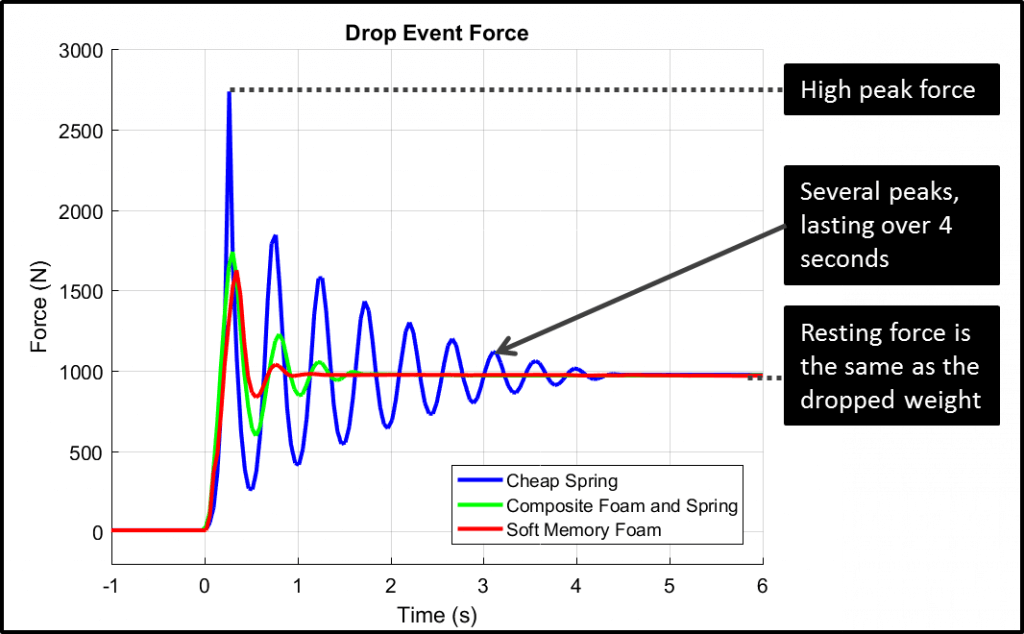Pulling Back the Curtain on the Mattress Industry
The mattress industry is full of smoke and mirrors—dubious sales tactics, inflated discounts, and pseudo-scientific claims. At Yawnder, we believe consumers deserve transparency, objective testing, and clear information to guide one of the most important investments in their health: their sleep.
Why Transparency Matters
Many mattresses come from the same handful of manufacturers, yet clever marketing and strategic markups inflate prices. Discounts are often illusions—retailers raise the “regular” price only to slash it later, creating false urgency.
Yawnder has partnered with DepthSight Innovations to develop proprietary mattress testing tools that cut through the hype. We’re proud to be the first independent, free service that provides these kinds of objective metrics.

The Tests We Perform
1. Free Weight Drop Test — We drop 220 pounds on the mattress to measure impact and bounce.
2. Firmness Test — A circular plate applies increasing force while we record pressure and travel. This shows how the mattress performs under different loads.

Metrics From the Firmness Test
- Firmness — Calculated per ASTM 1566. Less deflection = higher firmness.
- Surface Firmness — Measures how the bed feels under lighter loads (40 lbs).
- Memory — The hysteresis between loading/unloading paths. More difference = more “memory.”
Metrics From the Drop Test
- Impact Force — How hard you feel the “plop” when sitting down.
- Bounciness — How many times (and how long) you bounce before settling.
- Partner Shake — How much movement transfers across the bed.

Partner Shake Matters
Nobody wants to feel their partner tossing and turning all night. That’s why we measure “partner shake” with controlled weight drops. This shows how much motion transfers across the bed.

More Tests on the Horizon
Our team is developing next-gen tools to measure breathability (moisture transfer, not just airflow) and heat transfer. These will help us evaluate temperature regulation—a major factor in sleep quality.
Our Expert Team
Yawnder’s testing team brings years of research and hands-on evaluation of sleep products. We include a diverse range of testers—different body types, sleeping positions, and weight classes—ensuring our reviews reflect real-world needs.
Each mattress is rated on a five-point scale across categories like firmness, pressure relief, temperature regulation, and motion isolation.
Firmness Scale (1–10)
1–2: Ultra-Soft
3: Soft
4: Medium Soft
5: Average
6: Medium Firm
7–8: Firm
9–10: Ultra Firm
Most side sleepers prefer softer beds; stomach and back sleepers lean firmer. But firmness is personal—which is why we test across positions and body weights.
